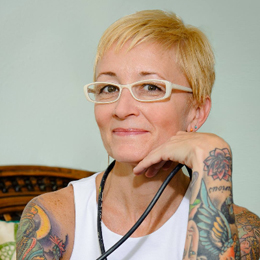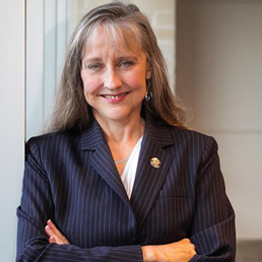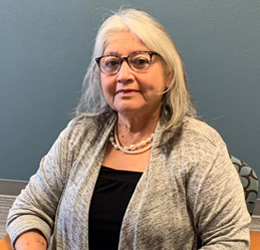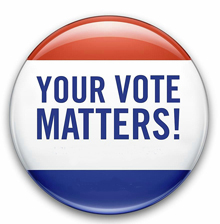Three places on the Garland City Council are up for reelection. Garland City Council District 2 will soon elect a representative. The candidates are Trayc Claybrook, incumbent Deborah Morris and Koni Kaiwi. District 5 will also elect a representative. Candidates are Cle Kimble, Margaret Lucht and Jon Dehn. Click here to see Q&A for District 5 candidates.
In addition, Council Members Jeff Bass and B.J. Williams, Districts 1 and 4 respectively, are running unopposed.
Early voting begins April 25 and ends May 3. Election Day is May 7. Click here for early voting locations.
Trayc Claybrook – candidate – City Council District 2
www.facebook.com/TraycDistrict2Garland
Why do you want to serve on the Garland City Council?
Garland’s District 2 needs a proven, resilient leader that puts the people first, leads with open communication and a focus on the future of Garland.
What experience/background qualifies you to serve on council?
I live in Garland, I own a small business in downtown Garland, I attend City Council work sessions and meetings, and I currently serve as the Mayor’s appointee on the Garland Cultural Art commission. I am also a Board Member/Treasurer of the Garland Downtown Business Association.
As a college professor I talk to young people everyday, as a business owner I talk to people of all ages everyday and I understand the value of listening to the people that I serve.
What are the few top changes that you feel need to be made in your district?
The continued improvement and construction of safe roads in District 2 and beyond, revitalizing aging and historic neighborhoods and neighborhood safety.
How will you approach getting those changes made?
We need to have honest and transparent communication with the individual neighborhoods because every neighborhood has its own unique set of challenges and solutions. Empowering the residents of these neighborhoods to be an active part of the process to find solutions for their unique needs will encourage community involvement and pride.
How will you involve your constituents in your decision-making?
Knocking on doors, speaking to neighborhood associations, inviting people to form neighborhood groups to discuss issues. I want to hear first hand from the neighborhoods themselves not only what the issues are but what solutions they themselves have come up with. Helping them implement solid solutions is empowering.
I also believe that taking an issue that is brought to light in council directly to the affected neighborhoods for their input fosters that needed community involvement and empowerment.
Problem solving is a back and forth process. It is discussions, idea sharing, communication, asking lots of questions, and finding answers to make informed decisions.
How will you approach the problem of Garland’s older declining neighborhoods?
Instilling community pride in declining neighborhoods. We need to help our neighbors succeed. There are so many variable reasons that neighborhoods get stuck in a declining state. We need to get into the neighborhoods and finding out what is happening. Empowering the neighborhood and individual neighbors to cleanup/repair/meet each other.
Having activities in these underserved neighborhoods that encourage meeting neighbors to interact with each other, find the common ground they share and foster these new relationships.
This effort is not just about revitalizing the properties but about the lifting up of the people that live in those properties.
What would you do to help with the homelessness issue?
Homelessness is a product of a broken systems. It is not a blanket issue. There are many types of homelessness. Those who are homelessness not by choice but by circumstance. Rising rents, low paying jobs, poor healthcare, etc. Then there are those who choose homelessness as a lifestyle. And then those individuals who are homeless due to mental illness and the lack of long term services.
Looking closely at the models for assisting veterans may translate into the ability to expand those programs to include the unhoused which include many veterans.
We need to start looking at these seemingly unsolvable issues from a new perspective and change the way we perceive these challenges.
At the end of the day, regardless of why they are homeless we need to remember that they are a sister, a brother, someone’s son, someone’s daughter. They are human beings.
Deborah Morris – incumbent/candidate – City Council District 2
* Campaign Website: https://deborahmorristx.com
* Facebook Page: https://www.facebook.com/deborahmorriscitycouncil
* Campaign Video: https://www.youtube.com/watch?v=69wSXerFTR0
Why do you want to serve on the Garland City Council?
I’m running for re-election to continue what I’ve started—which is an active partnership with the residents of District 2 to determine what they want to see happen in this city. I’ve demonstrated my commitment to that principle for the last four years as I’ve visited neighborhoods and businesses all across the district, held town halls, and interacted by phone, online, email and social media to listen to specific concerns and find ways to address them.
I believe in keeping constituents informed about what we’re doing. From the time I took office in May 2018, I have posted advance agenda notes before each City Council meeting highlighting District 2 issues in question, sharing my thoughts, answering questions, and asking for citizen feedback. It has been my goal to have no surprises sprung on my district.
I’m running on my record, not promises:
Street repairs in the district are now at an all-time high. The Downtown Square redesign is underway. The new Garland Animal Shelter & Adoption Center is now open. The popular new Dog Park is open, and was built without destroying any Little League fields at Central Park. The Parking Marshals program that I helped champion has been both effective and popular in our overcrowded neighborhoods. The median reflectors that I lobbied for in our 2020 budget are now brightening nighttime streets across District 2 and citywide. Older and less well-equipped parks throughout the district have received exciting new upgrades and amenities, with many more to come–including new walking trails! Embree Park is getting one of the city’s first splash pads, Lou Huff Park is getting a $4.4M makeover, and Tuckerville Park is being developed into a major Tennis Center.
So again, I hope to continue and enlarge upon what I’ve accomplished in partnership with the residents of District 2.
What experience/background qualifies you to serve on council?
I have lived and served in Garland for over 36 years, and have served as the District 2 Council Member since May 5, 2018. Previously I served as President of the Northeast Garland Neighborhood Association (NEGNA), as a Disaster Team Leader with the Dallas Area Red Cross (named “Volunteer of the Year” in 2000), as a First Aid Team Member with the Christian Motorcyclist Association (CMA), and as a board member with the Building & Fire Codes Board (City of Garland).
Perhaps more importantly, my years of experience during my writing career as an interviewer and researcher involved listening closely to people and establishing facts rather than jumping to conclusions. That has been very helpful as I’ve met with District 2 residents and businesses to tackle complex issues. I’ve been able to couple my business experience with problem-solving skills to find workable solutions for many longstanding complaints.
What are the few top changes that you feel need to be made in your district?
Although violent crime in Garland was actually down 7% in 2021 (and violent crime in District 2 was down 11%), gunshot disturbances continue to plague many of our neighborhoods. One tool I started pressing for in my first year on Council was a gunshot detection system for our city. The most popular system available at that time (ShotSpotter) cost millions of dollars each year, which was out of our reach. Happily, a new system (Flock) became available last year that combined cameras and LPRs (license plate readers), plus a new gunshot detection technology they were testing. In January 2022 we approved the order of 45 LPR/cameras and a trial of the gunshot detection system. I am hopeful that this will be a game-changer for us.
Bad behavior in parks, particularly late at night or on weekends, has been another source of complaints. Recently GPD installed pole-mounted video cameras overlooking several parks across the city where complaints have been high, including Central Park in District 2. While intended as a test program, the early results seem to be very positive. The complaints I’ve received related to Central Park have markedly dropped.
Another challenge I see is that the pandemic has effectively shut down some of our neighborhood associations across District 2, and probably elsewhere in the city. Groups went from meeting regularly to much smaller groups meeting irregularly on Zoom, to now having little to no participation. In addition to the negative impact on neighborhood relationships and cohesion, that also reduces neighborhoods’ abilities to apply for and receive Neighborhood Vitality Grants to fund improvements. I hope to encourage and support some “restarts” for dormant neighborhood associations, including matchmaking them with mentors from other active neighborhoods who can help them get back up and running.
Many other issues are more a matter of continuing what we’ve already started. Aggressive street repairs and replacements, sidewalk repairs and replacements, home and neighborhood improvement programs, and of course staying on course to implement all the 2019 Bond Program projects. The current supply chain issues and cost escalations due to inflation are complicating some of these projects, but like the old saying goes: “Failure is not an option”. We need to get it all done.
How will you approach getting those changes made?
I answered most of the “approach” questions above, but I’m currently drafting an action plan for encouraging neighborhood re-engagement. I have a large social media reach and email list for the district, but that doesn’t reach everyone. I hope to schedule a series of neighborhood meetings and events (as I routinely did pre-pandemic), and announce them in the City Press, by mailed postcard announcements, by email and on social media. I expect it will take concerted efforts to get people out of the now-ingrained “stay home and avoid people” mindset, but it’s important for both the neighborhoods and the city as a whole.
In a similar way I plan to arrange onsite meetings at many of our apartment communities in the district to encourage their engagement in the city process.
How will you involve your constituents in your decision-making?
I’ll continue to reach out as I’ve done from the start. From the time I took office in May 2018, I’ve visited neighborhoods and businesses all across the district, held town halls, and interacted by phone, online, email and social media to listen to citizen concerns and find ways to address them. I’ve also posted and emailed advance agenda notes before each City Council meeting highlighting District 2 issues in question, sharing my thoughts, answering questions, and asking for feedback.
I’ve accomplished several major goals in the last couple years regarding expanding accessibility, including reaching out to our Deaf/Hard of Hearing community and also making it possible for myself and fellow council members to hold phone conversations with constituents in numerous languages.
As of 2020, at my request, the City of Garland started providing closed-captioning for both meeting videos and other City of Garland videos, enabling our Deaf/HOH citizens to participate more fully. And as of 2021, again at my request, all council members were provided with VOIANCE services to enable real-time phone conversations through a live phone interpreter in all 100+ languages spoken in Garland. Although we routinely have written materials translated into our two largest non-English languages–Spanish and Vietnamese–that still leaves out a sizeable population.
I want no one left behind, or left out.
How will you approach the problem of Garland’s older declining neighborhoods?
First, not all older neighborhoods are in decline, although of course some are. Thanks to our many home and neighborhood improvement programs, we’ve made an enormous amount of progress in recent years in turning some older neighborhoods around. Programs include our Minor Home Repair Grant ($5000 grants to enable low-income elderly or disabled homeowners to make needed home repairs); our Single Family Home Rehab Program (funding up to $25K with a partial grant, partial repayment program); our popular Neighborhood Vitality Grant Program (where neighborhoods can receive up to $100K in matching funds over 5 years, and non-mandatory associations can receive up to $10K for eligible projects without providing matching funds); and based on continued funding our Home Improvement Incentive Rebate (providing up to $10K in a 50% match for exterior improvements to qualifying homes 30+ years old and valued under $200K).
In addition, our Community Development Department and the Garland Housing Finance Corporation (GHFC) have both been very successful in rehabbing, redeveloping, or infill-building single-family homes in older neighborhoods for affordable purchase by qualifying families.
Continuing to fund these vital programs, along with continuing to repair and replace our deteriorated streets and sidewalks in older neighborhoods will be critical. One initiative that’s currently under discussion in the Community Services Committee concerns ways we can accelerate sidewalk repairs and replacements while relieving adjacent homeowners from the financial burden of financially partnering in the process. As with all issues that impact our annual budget, much will depend on how future revenues and expenses look.
What would you do to help with the homelessness issue?
While homelessness is a complex national problem that calls for major federal and state funding increases for mental health care and treatment, housing interventions, drug and alcohol treatment, and jail diversion programs (among other things), here on a local level we have sought ways to prevent homelessless before it happens, help connect the homeless with needed resources, and to minimize the negative community impacts often associated with a large homeless presence.
Garland residents have huge hearts and a lot of compassion for the less fortunate among us, but they also don’t want to see Garland become another Portland or Seattle.
Several legal points to consider: homelessness itself is not a crime, and neither is panhandling, which the U.S. Supreme Court ruled in 2015 (Reed v. Gilbert) to be legally protected as free speech. In Dallas County, cases involving the homeless criminally trespassing against business properties are, by the D.A.’s policy, no longer prosecuted. And as of 9/1/2021, Texas House Bill 1925 banned camping in unapproved public places; illegal camps in Garland are now regularly cleared with advance warnings posted, and abandoned possessions are held for a time for owners to claim.
It’s a constant balancing act to provide compassionate assistance while keeping chaos at bay.
Fortunately, we have many community partners in Garland who provide food, clothing, and other short-term resources to the homeless, as well as nonprofits like Metro Relief who walk applicants through the process of obtaining permanent re-housing. Unfortunately, not all of those in need are willing (or mentally/emotionally able) to cooperate with such long-term solutions. The Garland Police Department has homeless liaisons and a mental health specialist on staff who work closely with the homeless population, and GPD is now in the process of adding a LMSW (Licensed Master Social Worker) as well. Although Garland does not have a homeless shelter, our homeless liaisons are well-versed in the shelter options and programs (like Family Gateway) available nearby.
On the front end, the City of Garland has been aggressive in promoting and distributing available rental assistance funding to help prevent homelessness before it begins. We’ve released numerous PSAs in English, Spanish and Vietnamese, added multi-lingual inserts to our utility bills, and promoted the programs using the City Press, City website, email distribution list, and social media. The federal Emergency Rental Assistance Program (ERAP) funding that became available due to the pandemic has specific distribution thresholds cities must meet in order to avoid losing unused funds; Garland has met or exceeded all thresholds. We’ve successfully partnered with Catholic Charities of Dallas to locate those in need and to administer the funds. In addition we’ve tracked apartment communities in Garland with high eviction rates and initiated outreach. That’s been a very successful approach.
One homeless intervention that I’ve been personally involved with over the last four years is GLOWS–the nonprofit Garland Overnight Warming Station program. GLOWS opens during periods of extreme cold to provide temporary housing to those who would otherwise be left on the streets. When the previous GLOWS location in South Garland closed, I worked with the organizers to find a new location. The Garland Salvation Army, Lavon Drive Baptist Church, and others stepped up to host, and Lavon Drive also committed their bus fleet to run routes citywide to gather those who need shelter from the cold whenever GLOWS activates. In addition, the City of Garland partners in messaging GLOWS activations through the City’s social media and digital signs, and to help with loans of cots as needed.
Koni Kaiwi – candidate – City Council District 2
Why do you want to serve on the Garland City Council? 
I am running for Garland City Council, District 2 because I believe that D2 needs a representative that mirrors its community. I believe that all our neighbors deserve to feel respected, valued and heard.
What experience/background qualifies you to serve on council?
I have lived and worked in the city of garland for the last 35 years. I have been involved in my community for as long as i’ve been here. As the President to our Garland LULAC Council, and as a community leader/Advocate I have sat and heard from people throughout the city not just DIstrict 2 about not being heard on issues that affect their neighborhoods. My greatest accomplishment is that I am the Founding Member of UNIDOS an organization that is not just local but is now a National Organization. It has helped build bridges between the police departments and the community.
What are the few top changes that you feel need to be made in your district?
I believe that we can work together and build on our progress while at the same time invest in preservation and revitalization of our older neighborhoods. By restoring pride in the community encourages its residents to place more effort into maintaining them.
How will you approach getting those changes made?
By having conversations with the people that live in those neighborhoods, we can come to an understanding as to how we can work together for the greater good of our neighborhoods.
How will you involve your constituents in your decision-making?
I believe in Garland and in working together I feel that being an active part of each community, assuring that its residents know their voice matters. I am here to listen and work with everyone and to have conversations that affect each neighborhood.
How will you approach the problem of Garland’s older declining neighborhoods?
Folks that live in our older aging neighborhoods feel that they have been ignored. I will work with them to help them and listen to their concerns, by working together – having conversations on what they feel their needs are we can make progress and revitalize their neighborhoods.
What would you do to help with the homelessness issue?
Homelessness ( i prefer to call them our unhoused, community) is a very very big issue and now after COVID we have seen many more lose their homes, I currently sit on the board of a group called THe GIdeon Project, working with our unhoused community, finding ways for them to trust us, for them to know that we are here to help and guide them through this process. We must first earn their trust so that we can work with them and help them move forward.


